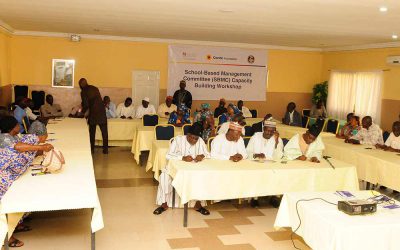Severe shortages of classroom space results in class sizes that sometimes triple the prescribed teacher-pupil ratio for Nigeria of 1:40 (National Bureau of Statistics, 2009; World Bank, 2008). Many schools lack the essential infrastructure to enable them function as safe, efficient and effective schools, and where these infrastructures exist, they are poorly maintained. The dearth of these services needs to be addressed as a matter of urgency.
The condition, location and nature of school infrastructure have an impact on access and quality of education; the closer a school is to children’s homes, the more likely they are to attend, both because of distance and safety issues. Likewise, where the quality of infrastructure (particularly water and sanitation facilities) is improved, enrolment and completion rates tend to rise while teacher absenteeism drops. The availability and condition of school facilities also influence learning outcomes.
Given the need for infrastructure and the limited resources available, Oando Foundation’s infrastructure development programme aims to improve learning outcomes and increase girl child enrolment by creating superior learning environments through renovation of existing structures, building of new structures, and provision of water and toilet facilities which would improve hygiene and sanitation levels in all adopted schools.
The Foundation employs the Community-Based Renovation Approach (CBRA), working with School Based Management Committees to increase community involvement, empower local artisans and reduce project costs.
To date, Oando Foundation has constructed and renovated 153 classrooms, 107 toilets, and water supply to support the sanitation and hygiene needs of students in adopted schools.




